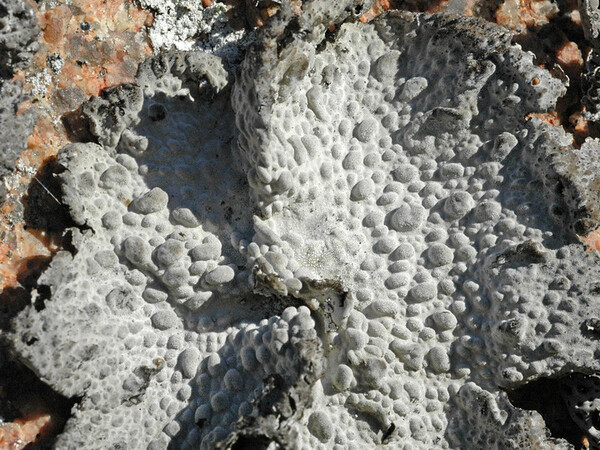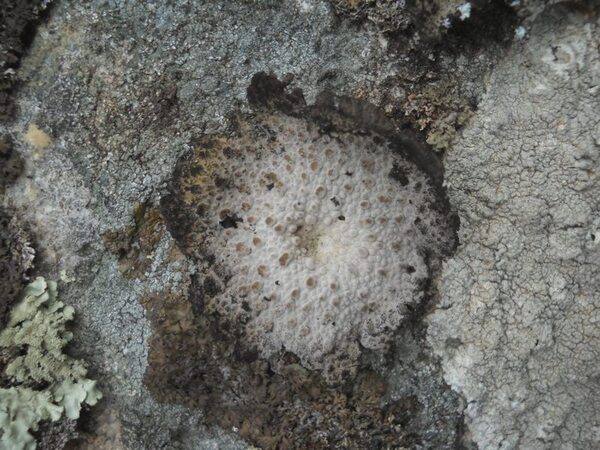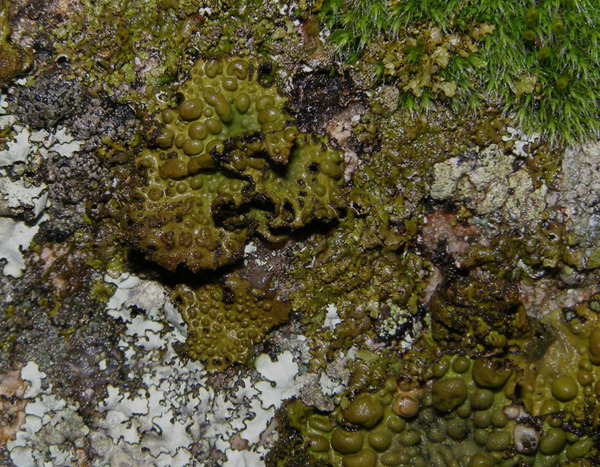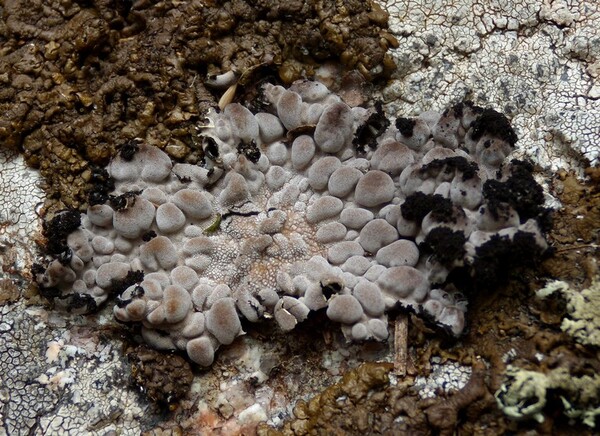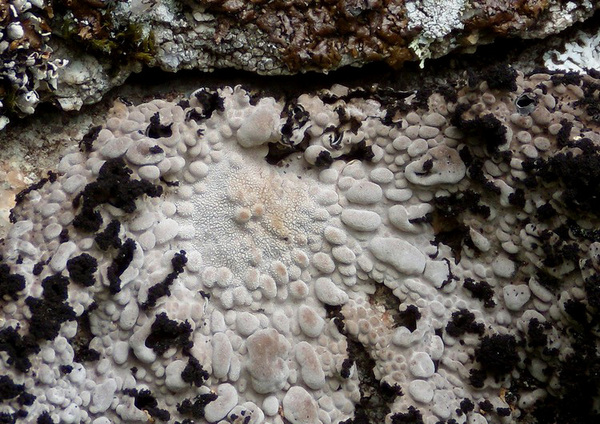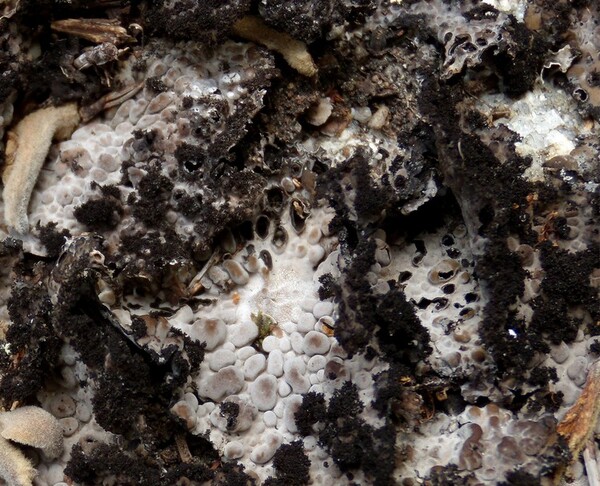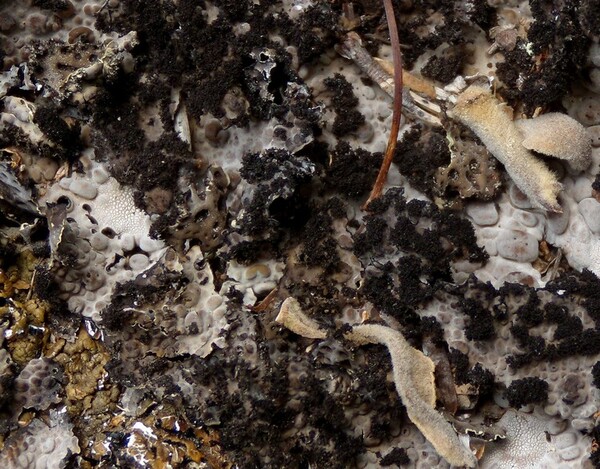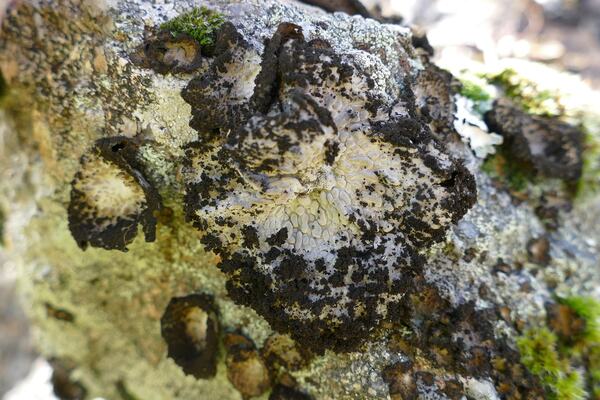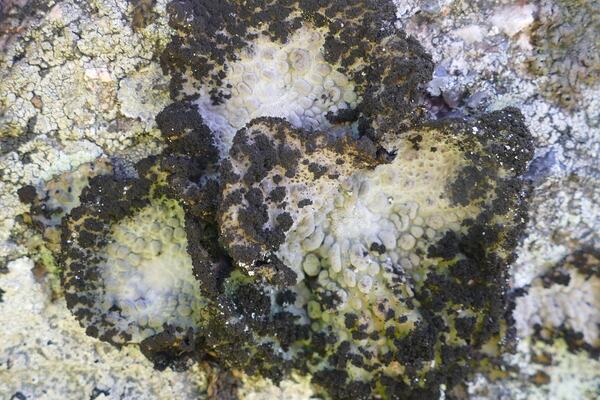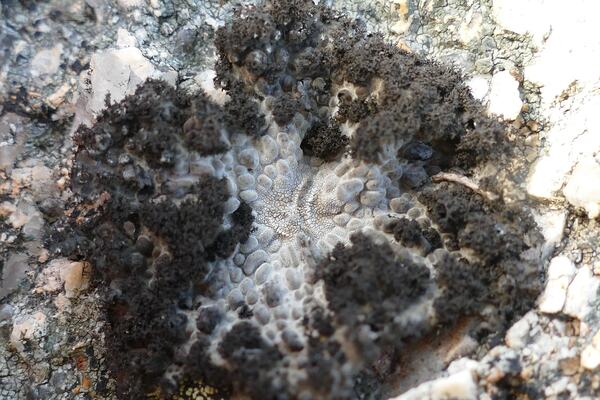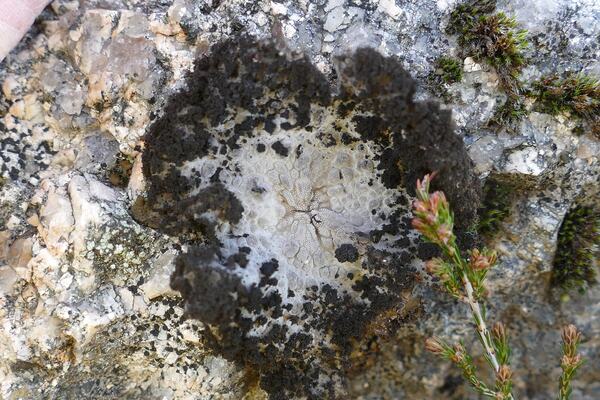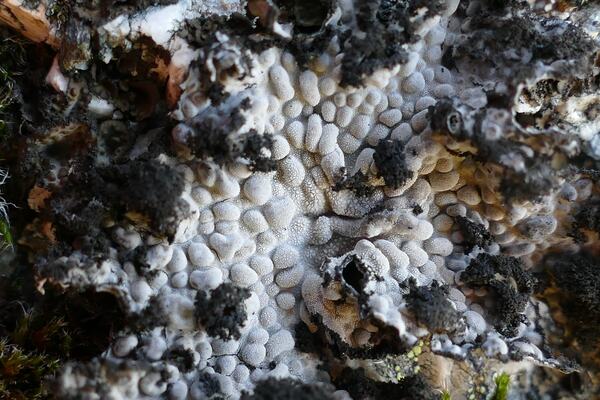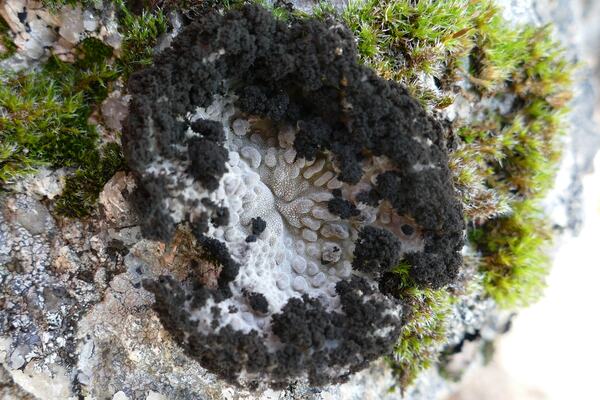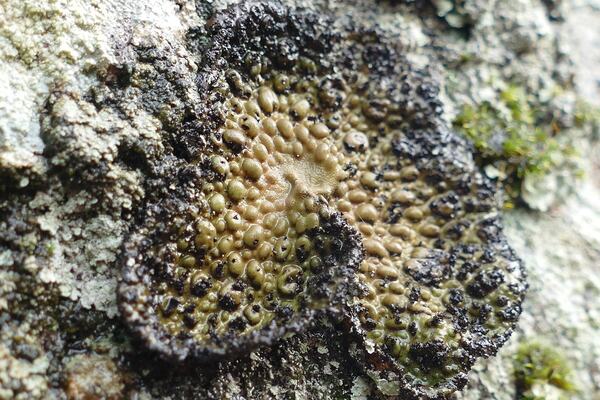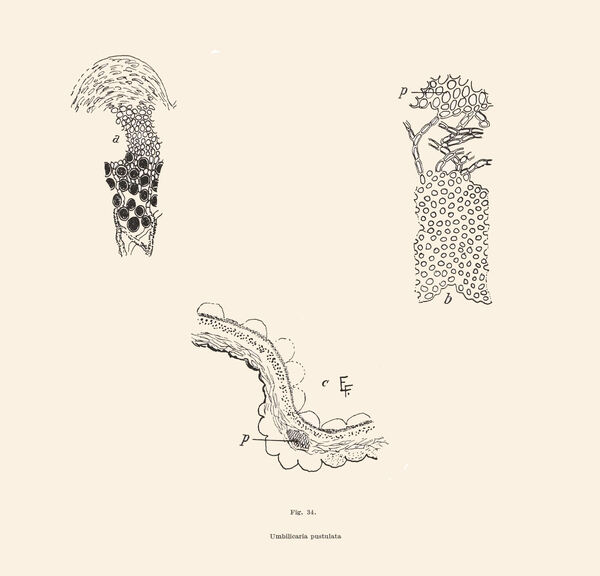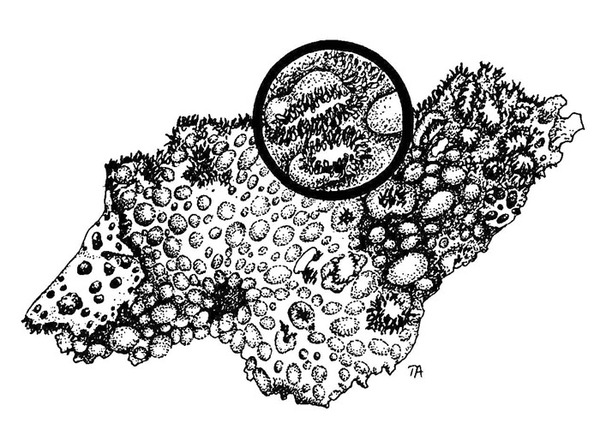Umbilicaria pustulata (L.) Hoffm.
Descr. Adumb. Plant. Lich. 2, 1: 13, 1791. Basionym: Lichen pustulatus L. - Sp. Pl.: 1150, 1753.
Synonyms: Gyrophora pustulata (L.) Ach.; Lasallia pustulata (L.) Mérat; Macrodictya pustulata (L.) A. Massal.; Umbilicaria pustulata (L.) Hoffm.
Distribution: N - Ven, TAA (Nascimbene 2006c), Lomb (Dalle Vedove & al. 2004), Piem (Morisi & Sereno 1995, Isocrono & Falletti 1999, Isocrono & al. 2003, Morisi 2005, Isocrono & Piervittori 2008), VA (Piervittori & Isocrono 1999), Emil (Fariselli & al. 2020), Lig (Brunialti & al. 1999). C - Tosc (Pišút 1997), Laz (Genovesi & al. 2011, 2011b), Sar (Monte 1993, Feige & Lumbsch 1994, Nöske 2000, Rizzi & al. 2011, Cossu & al. 2015, Neuwirth 2018). S - Camp, Bas (Potenza 2006,Lich. Ital. Exs. 57: Isocrono & al. 2021), Cal (Puntillo 1996), Si (Czeczuga & al. 1999, Ottonello 2005, Brackel 2008b).
Description: Thallus foliose-umbilicate, monophyllous, usually large to very large, 3-10(-20) cm diam., dull brown but often coarsely white-pruinose when dry, green-brown when wet, attached by a stout, central holdfast. Upper surface with numerous conspicuous, convex, round to oval pustules, the margins becoming more or less eroded. Isidia coralloid, dark, arranged in clusters, especially around cracks of the upper cortex. Lower surface grey to brown-black, reticulate, with broad depressions corresponding to the pustules, erhizinate. Apothecia very rare, 1-3 mm across, with a black, flat, smooth disc and a persistent, smooth or partially isidiate true exciple. Asci 1(-2)-spored, elongate-clavate, thick-walled, with a K/I+ blue apical dome. Ascospores muriform, fist hyaline, then brown, 28-70 x 18-34 μm. Pycnidia black, immersed. Conidia bacilliform, 2.5-3 x c. 1 μm. Photobiont chlorococcoid. Spot tests: thallus K-, C-, KC-, P-; medulla K-, C+ red, KC+ red, P-, UV-. Chemistry: medulla with gyrophoric acid. Note: a temperate to boreal-montane, circumpolar species found on periodically wetted, but rapidly drying surfaces of basic siliceous rocks, usually in seepage tracks, with a wide altitudinal range, but usually absent above treeline. The species is widespread both in the Alps and in the mountains of Mediterranean Italy.
Growth form: Foliose, umbilicate
Substrata: rocks
Photobiont: green algae other than Trentepohlia
Reproductive strategy: mainly asexual, by isidia, or isidia-like structures (e.g. schizidia)
Commonnes-rarity: (info)
Alpine belt: absent
Subalpine belt: very rare
Oromediterranean belt: rare
Montane belt: rather rare
Submediterranean belt: very rare
Padanian area: absent
Humid submediterranean belt: very rare
Humid mediterranean belt: extremely rare
Dry mediterranean belt: absent
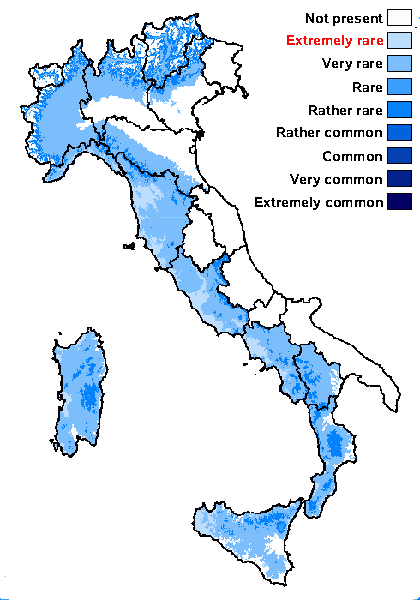
Predictive model
Herbarium samples


P.L. Nimis; Owner: Department of Life Sciences, University of Trieste
Herbarium: TSB (8260)
2001/11/25
detail of lower surface
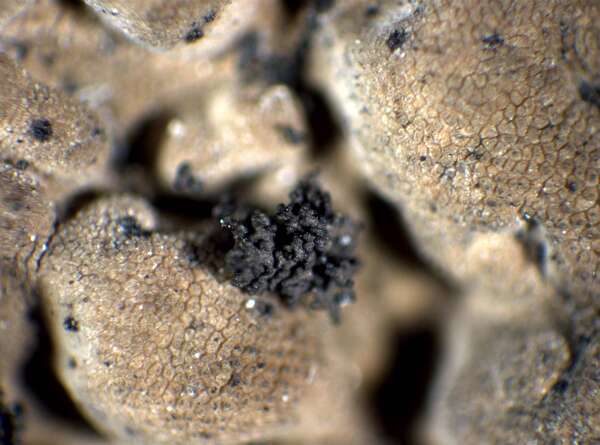

P.L. Nimis; Owner: Department of Life Sciences, University of Trieste
Herbarium: TSB (8260)
2001/11/25
detail of isidia
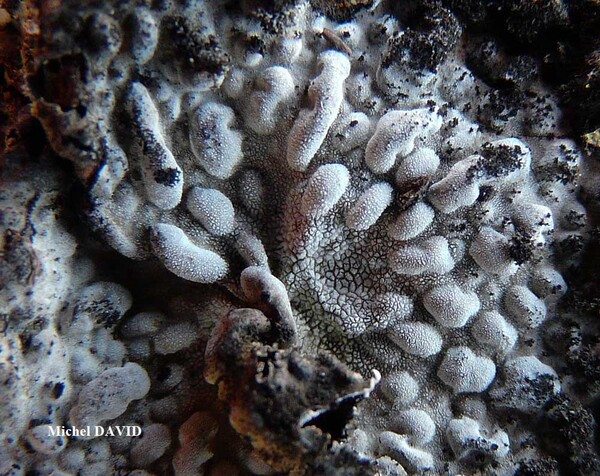
Michel David - Source: http://www.lichensmaritimes.org/index.php?task=fiche&lichen=126&lang=en
France, Postolonne
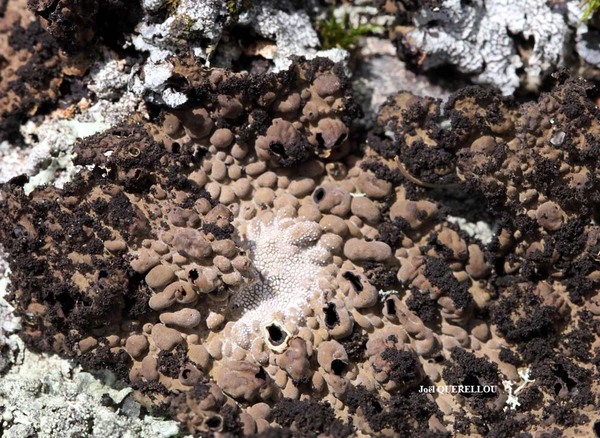
Joël Querellou - Source: http://www.lichensmaritimes.org/index.php?task=fiche&lichen=126&lang=en
France, Hanvec

Joël Querellou - Source: http://www.lichensmaritimes.org/index.php?task=fiche&lichen=126&lang=en
France, Hanvec
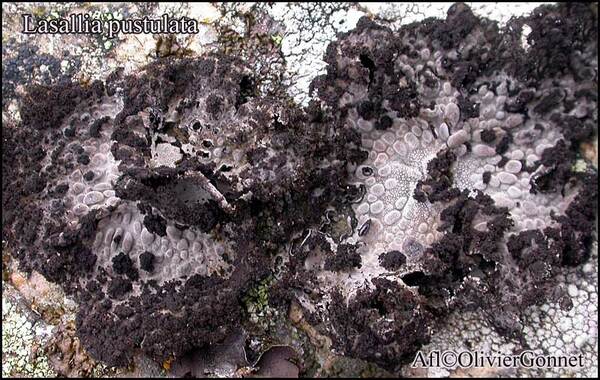
Courtesy Danièle et Olivier Gonnet - Source: https://www.afl-lichenologie.fr/Photos_AFL/Photos_AFL_U/Textes_U/Umbilicaria%20pustulata.htm
France, sur rocher siliceux - session AFL 2005 - Lozère

Courtesy Danièle et Olivier Gonnet - Source: https://www.afl-lichenologie.fr/Photos_AFL/Photos_AFL_U/Textes_U/Umbilicaria%20pustulata.htm
France, sur rocher siliceux - session AFL 2005 - Lozère
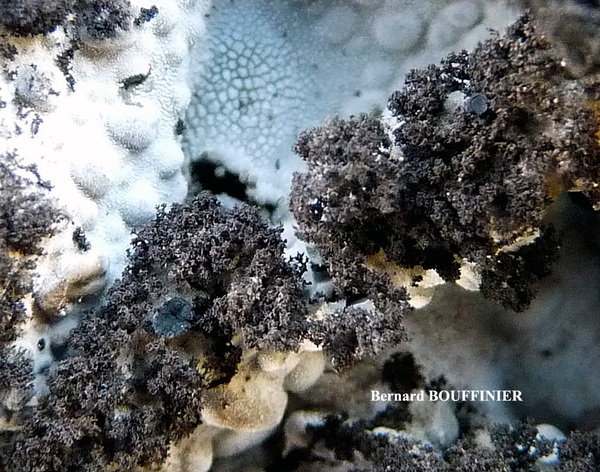
Bernard Bouffinier - Source: http://www.lichensmaritimes.org/index.php?task=fiche&lichen=126&lang=en
Italy, Sardinia
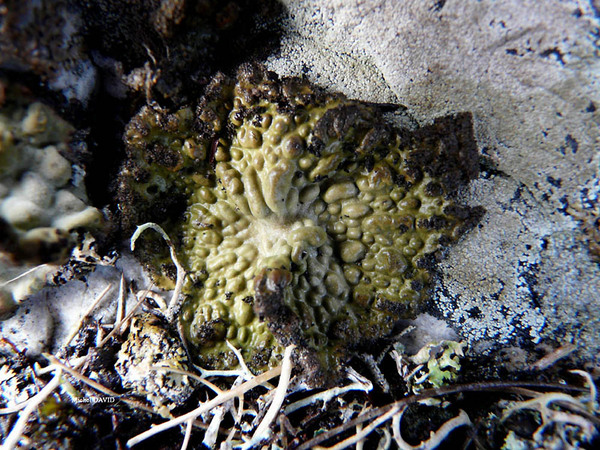
Michel David - Source: http://www.lichensmaritimes.org/index.php?task=fiche&lichen=126&lang=en
France, Tréberon
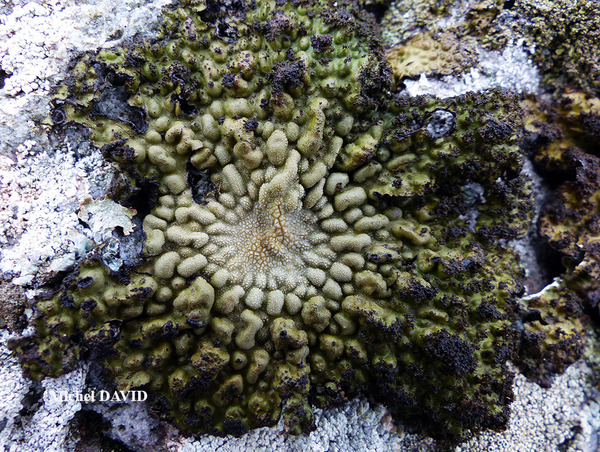
Michel David - Source: http://www.lichensmaritimes.org/index.php?task=fiche&lichen=126&lang=en
France, Tréberon
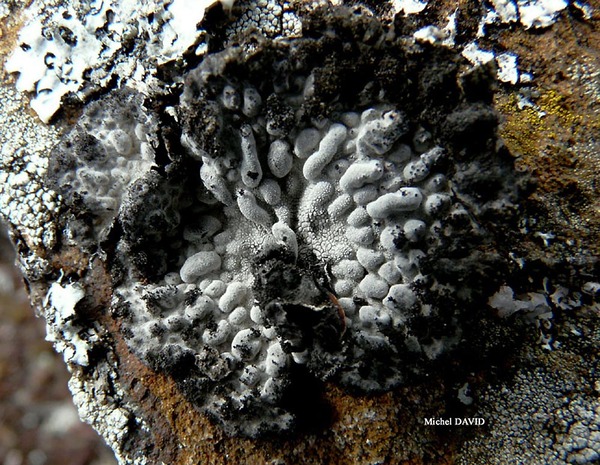
Michel David - Source: http://www.lichensmaritimes.org/index.php?task=fiche&lichen=126&lang=en
France, Tréberon
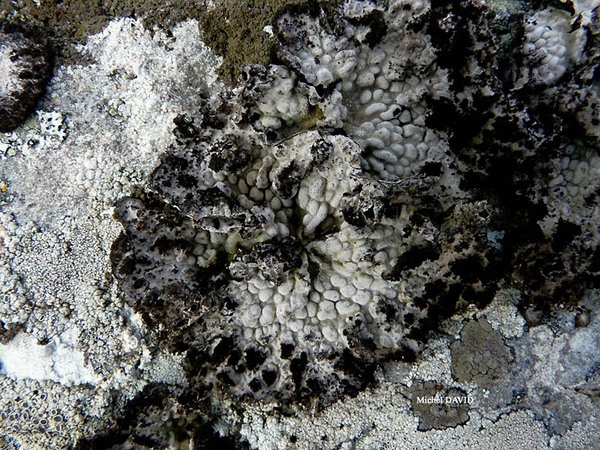
Michel David - Source: http://www.lichensmaritimes.org/index.php?task=fiche&lichen=126&lang=en
France, Tréberon
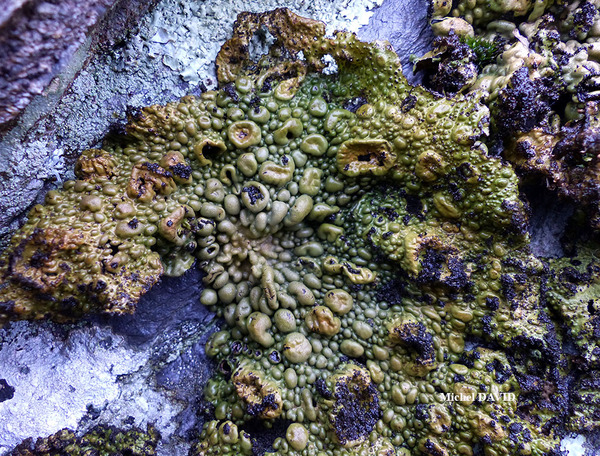
Michel David - Source: http://www.lichensmaritimes.org/index.php?task=fiche&lichen=126&lang=en
France, Hanvec
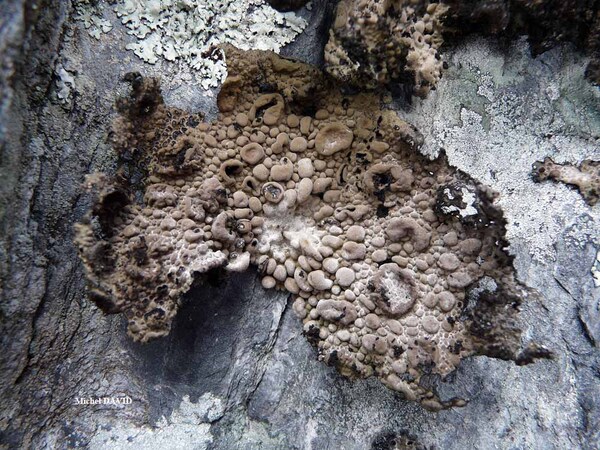
Michel David - Source: http://www.lichensmaritimes.org/index.php?task=fiche&lichen=126&lang=en
France, Hanvec
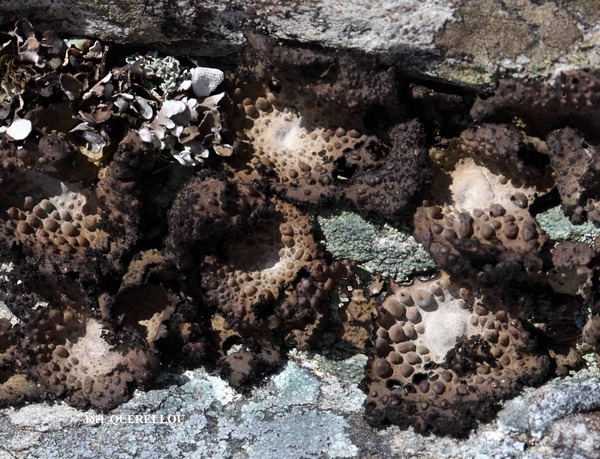
Joël Querellou - Source: http://www.lichensmaritimes.org/index.php?task=fiche&lichen=126&lang=en
France, Hanvec
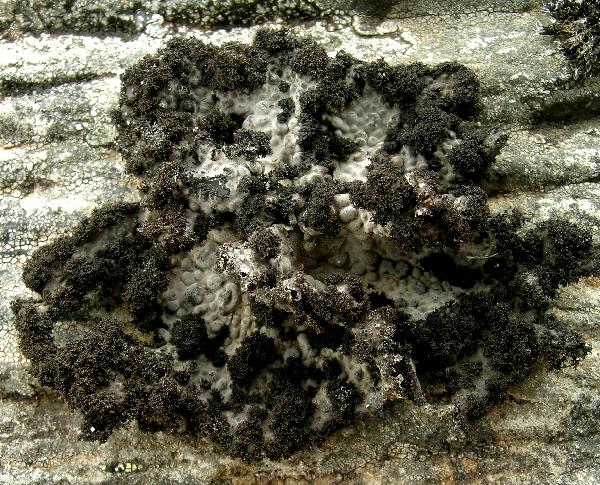
Ulrich Kirschbaum CC BY-SA 4.0 - Source: https://www.thm.de/lse/ulrich-kirschbaum/flechtenbilder
Portugal: Madeira.

Zahlbruckner A. 1926. Lichenes (Flechten). In: Engler A. (ed.): Die natürlichen Pflanzenfamilien. 2nd ed., vol 8, W. Engelmann, Leipzig, 270 pp.
Growth form: Foliose, umbilicate
Substrata: rocks
Photobiont: green algae other than Trentepohlia
Reproductive strategy: mainly asexual, by isidia, or isidia-like structures (e.g. schizidia)
Commonnes-rarity: (info)
Alpine belt: absent
Subalpine belt: very rare
Oromediterranean belt: rare
Montane belt: rather rare
Submediterranean belt: very rare
Padanian area: absent
Humid submediterranean belt: very rare
Humid mediterranean belt: extremely rare
Dry mediterranean belt: absent

Predictive model
| Herbarium samples |


P.L. Nimis; Owner: Department of Life Sciences, University of Trieste
Herbarium: TSB (8260)
2001/11/25
detail of lower surface


P.L. Nimis; Owner: Department of Life Sciences, University of Trieste
Herbarium: TSB (8260)
2001/11/25
detail of isidia

Michel David - Source: http://www.lichensmaritimes.org/index.php?task=fiche&lichen=126&lang=en
France, Postolonne

Joël Querellou - Source: http://www.lichensmaritimes.org/index.php?task=fiche&lichen=126&lang=en
France, Hanvec

Joël Querellou - Source: http://www.lichensmaritimes.org/index.php?task=fiche&lichen=126&lang=en
France, Hanvec

Courtesy Danièle et Olivier Gonnet - Source: https://www.afl-lichenologie.fr/Photos_AFL/Photos_AFL_U/Textes_U/Umbilicaria%20pustulata.htm
France, sur rocher siliceux - session AFL 2005 - Lozère

Courtesy Danièle et Olivier Gonnet - Source: https://www.afl-lichenologie.fr/Photos_AFL/Photos_AFL_U/Textes_U/Umbilicaria%20pustulata.htm
France, sur rocher siliceux - session AFL 2005 - Lozère

Bernard Bouffinier - Source: http://www.lichensmaritimes.org/index.php?task=fiche&lichen=126&lang=en
Italy, Sardinia

Michel David - Source: http://www.lichensmaritimes.org/index.php?task=fiche&lichen=126&lang=en
France, Tréberon

Michel David - Source: http://www.lichensmaritimes.org/index.php?task=fiche&lichen=126&lang=en
France, Tréberon

Michel David - Source: http://www.lichensmaritimes.org/index.php?task=fiche&lichen=126&lang=en
France, Tréberon

Michel David - Source: http://www.lichensmaritimes.org/index.php?task=fiche&lichen=126&lang=en
France, Tréberon

Michel David - Source: http://www.lichensmaritimes.org/index.php?task=fiche&lichen=126&lang=en
France, Hanvec

Michel David - Source: http://www.lichensmaritimes.org/index.php?task=fiche&lichen=126&lang=en
France, Hanvec

Joël Querellou - Source: http://www.lichensmaritimes.org/index.php?task=fiche&lichen=126&lang=en
France, Hanvec

Ulrich Kirschbaum CC BY-SA 4.0 - Source: https://www.thm.de/lse/ulrich-kirschbaum/flechtenbilder
Portugal: Madeira.

 Index Fungorum
Index Fungorum
 GBIF
GBIF
